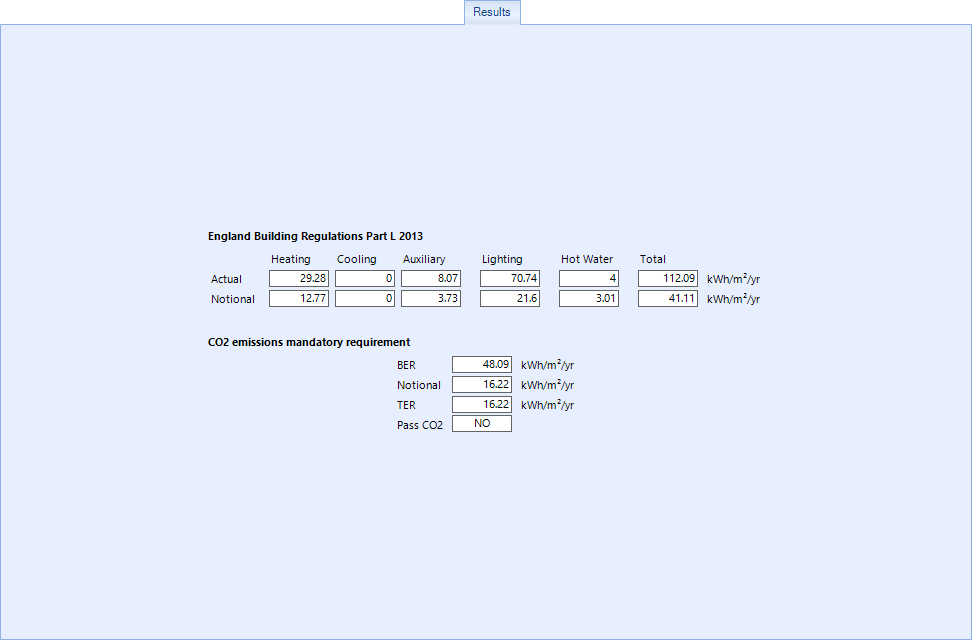| England Building Regulations Part L 2013
|
A Building rating document is automatically produced
and this document is displayed. The document provides access to various key
calculation results including the following.
- The energy used per
square meter (kWh/m2) by the actual and notional buildings for heating,
cooling, auxiliary energy uses (pumps and fans), lighting and domestic hot
water.
- The resulting CO2
emissions (kgCO2/m2) from the actual and notional buildings.
|
| CO2 emissions mandatory requirement
|
Carbon dioxide emissions for the actual building
(BER) is computed by SBEM. A notional building is automatically constructed
using the actual building data and limiting U values and glazed areas, as
defined in PartL. The carbon dioxide emission for the notional building is
computed by SBEM. Two factors, the Improvement factor and the LZC factor are
computed by SBEM and applied to the notional building emission to give a target
emission rate (TER). The computed building emission rate (BER) must be less
than or equal to the Target emission rate (TER) for CO2 emission compliance.
U values (see compliance
document) – a check is made by SBEM to see if the fabric U values specified for
the project are within the limiting U values in PartL Table 4, for both
individual element U values and area-weighted average U values.
Solar gains - (see
compliance document) - a calculation is carried out for each room, to check if
the solar and internal casual gains (people, lighting and equipment), averaged
over the period of daily occupancy, does not exceed 35 W/m2. Solar irradiances
for July in table 2.24 (CIBSE A 1999) are used for this check.
|

